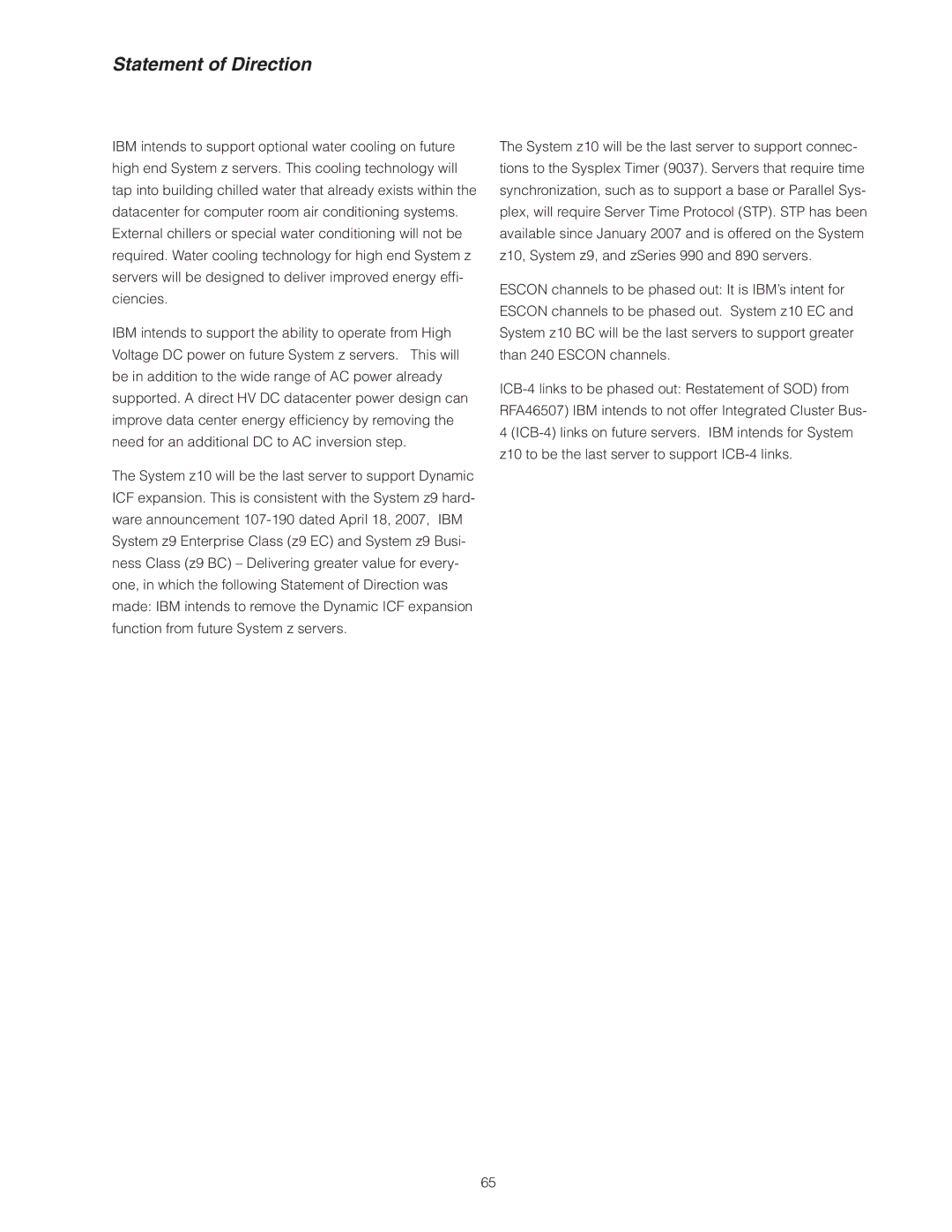Statement of Direction
IBM intends to support optional water cooling on future high end System z servers. This cooling technology will tap into building chilled water that already exists within the datacenter for computer room air conditioning systems. External chillers or special water conditioning will not be required. Water cooling technology for high end System z servers will be designed to deliver improved energy effi - ciencies.
IBM intends to support the ability to operate from High Voltage DC power on future System z servers. This will be in addition to the wide range of AC power already supported. A direct HV DC datacenter power design can improve data center energy effi ciency by removing the need for an additional DC to AC inversion step.
The System z10 will be the last server to support Dynamic ICF expansion. This is consistent with the System z9 hard- ware announcement
The System z10 will be the last server to support connec- tions to the Sysplex Timer (9037). Servers that require time synchronization, such as to support a base or Parallel Sys- plex, will require Server Time Protocol (STP). STP has been available since January 2007 and is offered on the System z10, System z9, and zSeries 990 and 890 servers.
ESCON channels to be phased out: It is IBM’s intent for ESCON channels to be phased out. System z10 EC and System z10 BC will be the last servers to support greater than 240 ESCON channels.
65
